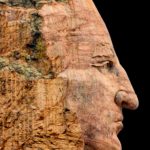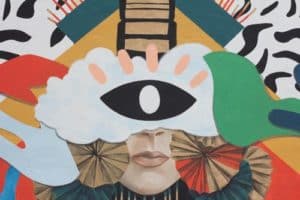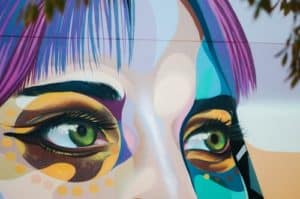How do the characters and elements in Art Alive come to life? What dastardly wizardry are we employing in order to bring people that have been frozen in time and place for decades into the living and breathing (artificial) world? Contrary to what you might think, the process does involve wizards and the sacrifice of goats. We wouldn’t have it any other way.
Dissecting The Print
The first step is to remove the elements from the print themselves so they are controllable. In this process, we often have to create elements that were not there originally. If a person or landscape is partially covered by another element, the elements that are covered must be recreated so we don’t have people walking around without shoulders or mountains with person size holes in the middle of them.

For this we turn to the experts. Amberlea Williams is an Ottawa-based artist and she pretty much rules at everything she does. We send the prints to her and within 24 hours usually have them back in layers upon layers of detail with each element meticulously recreated and dissected for our own use. She’s the best – buy her stuff.
Breaking It Down
We’ll talk more about how we develop the stories we work with in a future blog post, but once the story is developed we have a pretty good idea as to what elements we want to animate. We then set about animating those specific elements.
Each character is broken down into individual components. Arms, legs, noses – it’s all there for us to play with. Take this example of a character from the print Reward for a Successful Hunt by Piona Keyuakjuk of Pangnirtung, Nunavut.
Mapping A Structure
The character’s elements are then imported into Unity and rebuilt. Each element goes in, in a jumble of pieces and the character must be reassembled. Each component as it is pulled out is placed back into Unity and rebuilt. The characters’ body parts are layered in order to provide a sense of depth and provide more natural looking movement.
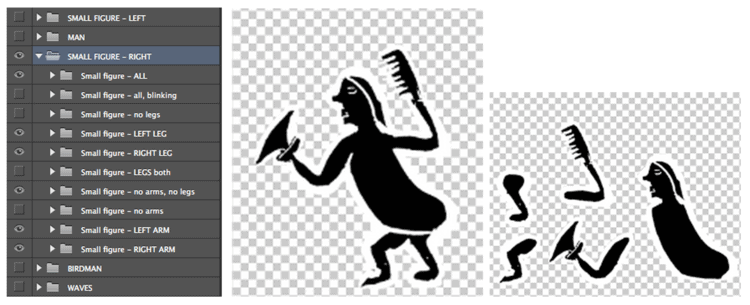
Without getting too far into the technical, the character is built into Unity’s animation system. Each dot on this image below represents a “key frame” in the animation sequence where the elements of the character are manipulated and moved. We assign the value of these dots in advance and then run a sequence which calls on those assigned values.
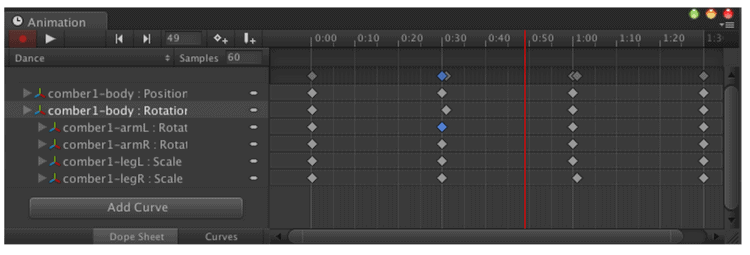
Viewed visually we can see it represented by animation curves.

When put all together, our man is suddenly moving and beginning to show signs of life.
Advanced Structure
This is a basic glossing over the animation structure that Art Alive uses. It’s worth mentioning that we also employ a technique that actually allows us to physically map a false skeletal structure to 2D figures and it automatically brings them to life.
In essence we take a 2D figure and apply the skeletal structure like so.
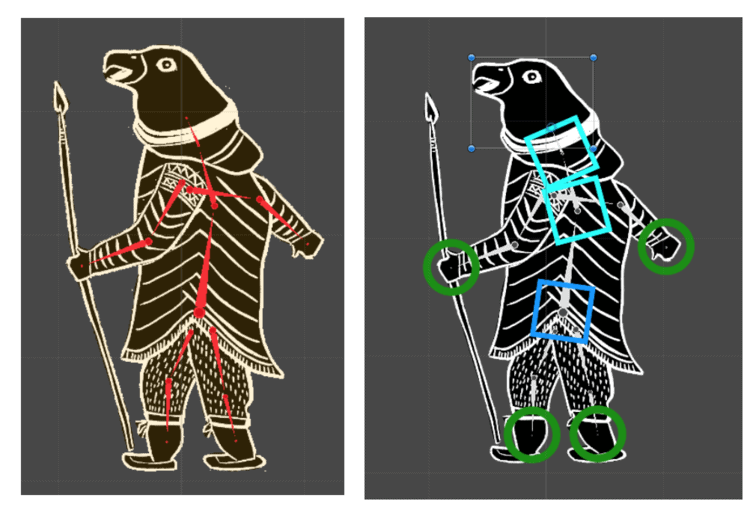
Each key feature on the creature is highlighted and assigned a roll. We tell the computer where his skeleton is and it does all the math for us from there, manipulating the 2D images at our whim.
Oh, and then we sacrifice a goat with the help of our resident Wizard. Obvi.
